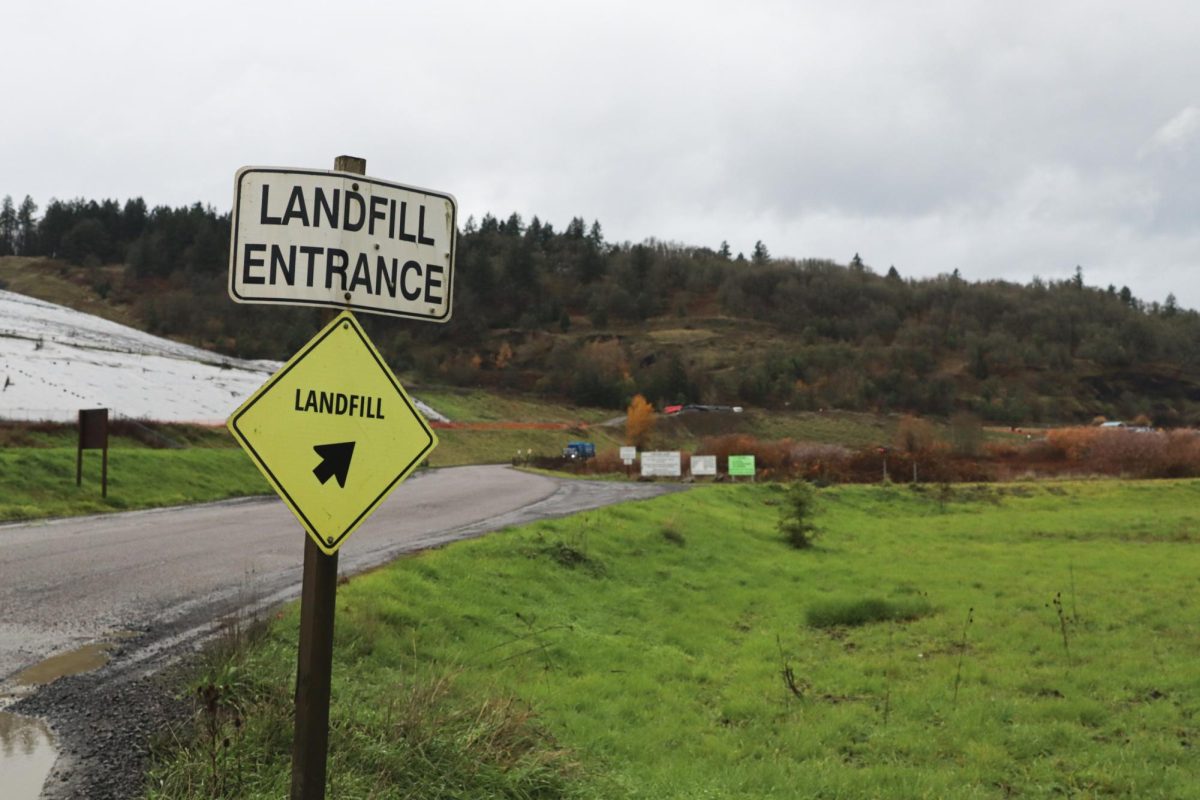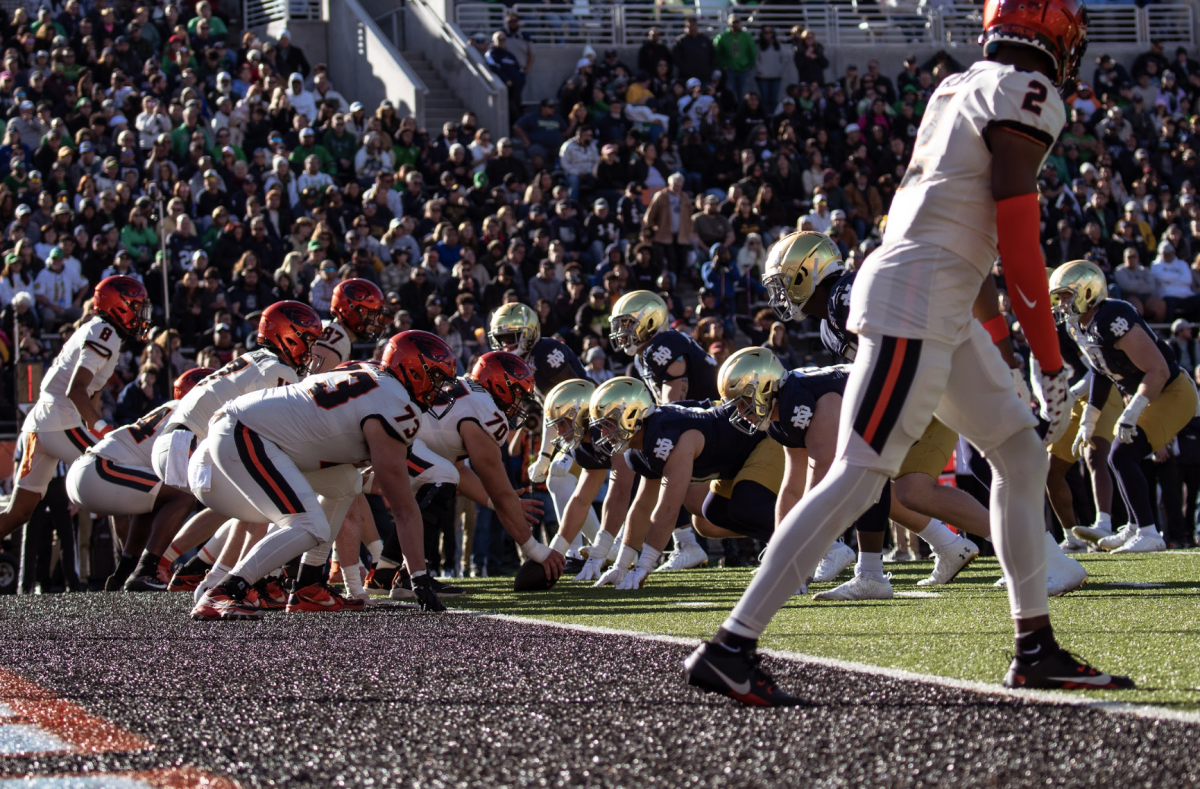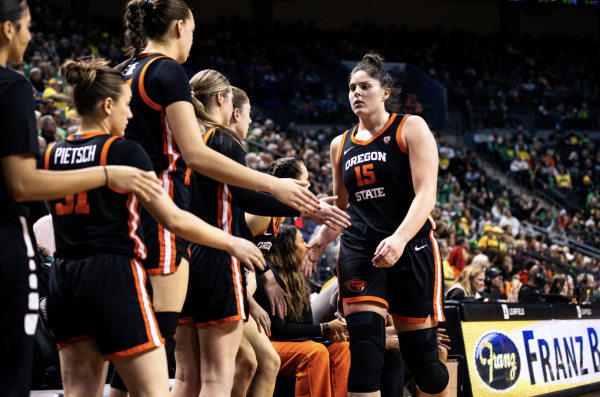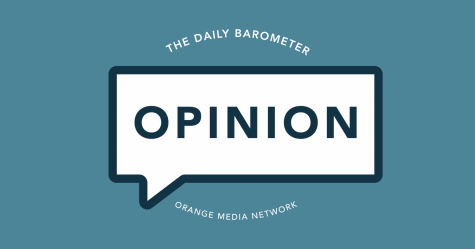Does animal research impose on animal ethics?
April 2, 2018
OSU research and moral duty to animals.
Our culture has been molded around the exploitation of animals. What is the role of Oregon State University and the students when animal ethics are involved?
Animal testing reaches all corners of the consumer market. Testing can feed into cosmetic products, adding efficiency to animal production and medical research. As a research institution we must ask ourselves one question: What can we really do?
Dr. James Hermes is the extension poultry specialist at OSU and has been a faculty member since 1993. Through his work, he helps producers organize the processing of animals and helps consumers understand the ins and outs of the industry.
Hermes stated that the university has acquired various regulations and groups like the Institutional Animal Care and Use Committee to investigate and clear methods that ensure practices developed through education and research provide limited harm to the animals they use.
“Back in those days, there was no control or oversight. We’ve transitioned to doing extensive paperwork and there is a detailed process for us to go through to protect the welfare of the animals,” Hermes said.
As an agricultural institution, why should OSU care about the treatment of animals and the environmental consequences that the industry triggers? What is being done to prepare the future students in the agriculture field?
There is a required class for animal science students called “Ethical Issues in Animal Agriculture” that teaches animal welfare issues, rangeland grazing on federal lands and animal processing ethics.
Although these areas of animal production are important to look at, they don’t dive into the real motivations for animal ethics.
Bjørn Kristensen is a graduate student in the Applied Ethics program who works in animal studies, environmental and food justice. He is concerned with the relationships between humans and non-human animals, the ways human and the non-humans interact and our duties to them as creatures.
Animals in the agriculture field are used as an end through means of production; their needs tend to be addressed based on the financial demands of producers rather than the individual concerns of each animal and how they ought to be treated.
“Producers understand that doing something wrong could impact productivity and impact their bottom line, so welfare is important for productivity,” Hermes said.
This line of thinking stems from the moral theory utilitarianism. It makes the assertion that actions are right if they are useful or for the benefit of a majority.
Kristensen believes that the interest of humans shouldn’t overshadow those of other animals. He states that animals should receive respect and compassion, and wishes to seem them recognized as the individuals that they are.
“Our moral obligations to humans and non-humans may be very different,” Kristensen said. “Through the lens of relational ethics, our moral duties vary based on the unique needs of each kind of being and our relationships with them. This means that the moral responsibility extends beyond our own species.”
According the the Animal Welfare Association, 1.13 million animals (not including mice and rats) are used in agricultural research.
To actively participate in the eradication of animal injustice through research, World Day for Laboratory Animals is coming up on April 24th. This global movement started in 1979 to end the suffering that animals face.
If we don’t fight for animals rights and help them find justice they will continue to be exploited. It’s our duty as the apex species to maintain the welfare of animals we’ve domesticated and interact with, and maintain a stable holistic approach to their welfare.
























































































































